Jiahong Wei
Genetic U-Net: Automatically Designing Lightweight U-shaped CNN Architectures Using the Genetic Algorithm for Retinal Vessel Segmentation
Nov 03, 2020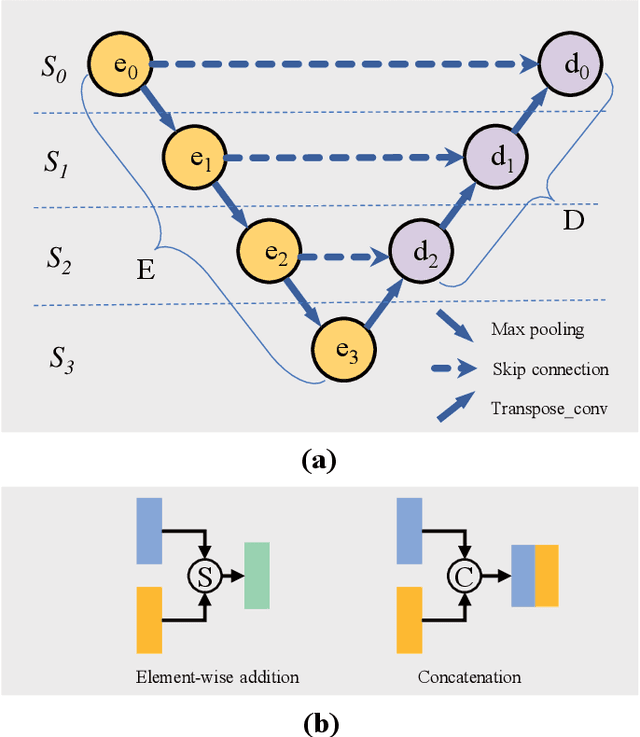
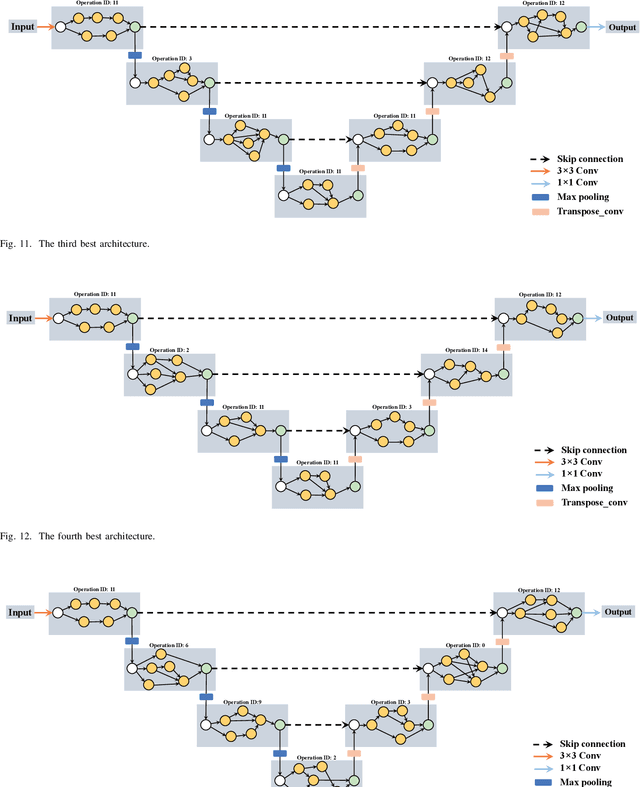
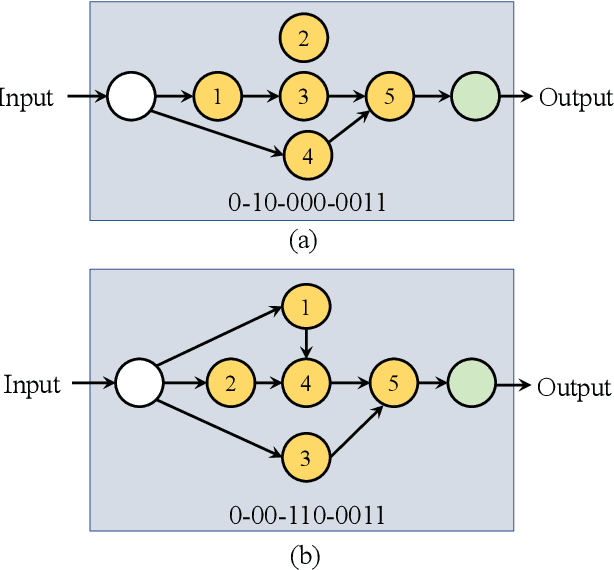
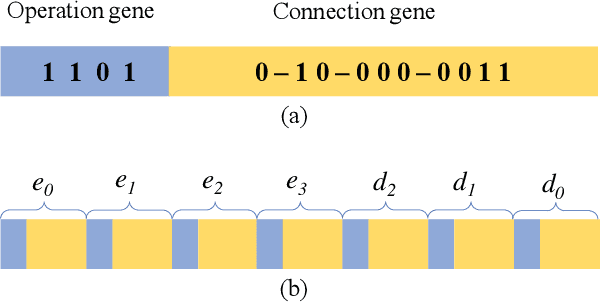
Abstract:Many previous works based on deep learning for retinal vessel segmentation have achieved promising performance by manually designing U-shaped convolutional neural networks (CNNs). However, the manual design of these CNNs is time-consuming and requires extensive empirical knowledge. To address this problem, we propose a novel method using genetic algorithms (GAs) to automatically design a lightweight U-shaped CNN for retinal vessel segmentation, called Genetic U-Net. Here we first design a special search space containing the structure of U-Net and its corresponding operations, and then use genetic algorithm to search for superior architectures in this search space. Experimental results show that the proposed method outperforms the existing methods on three public datasets, DRIVE, CHASE\_DB1 and STARE. In addition, the architectures obtained by the proposed method are more lightweight but accurate than the state-of-the-art models.
Automatic Crack Detection on Road Pavements Using Encoder Decoder Architecture
Jul 01, 2020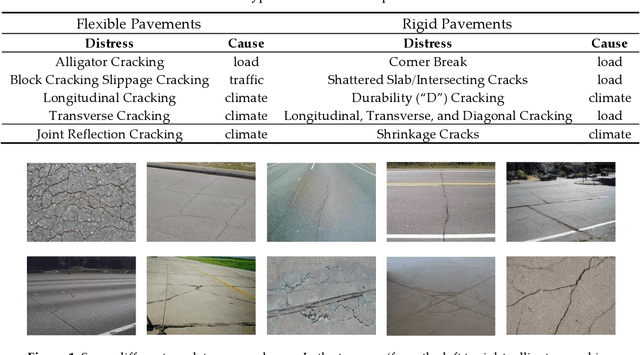


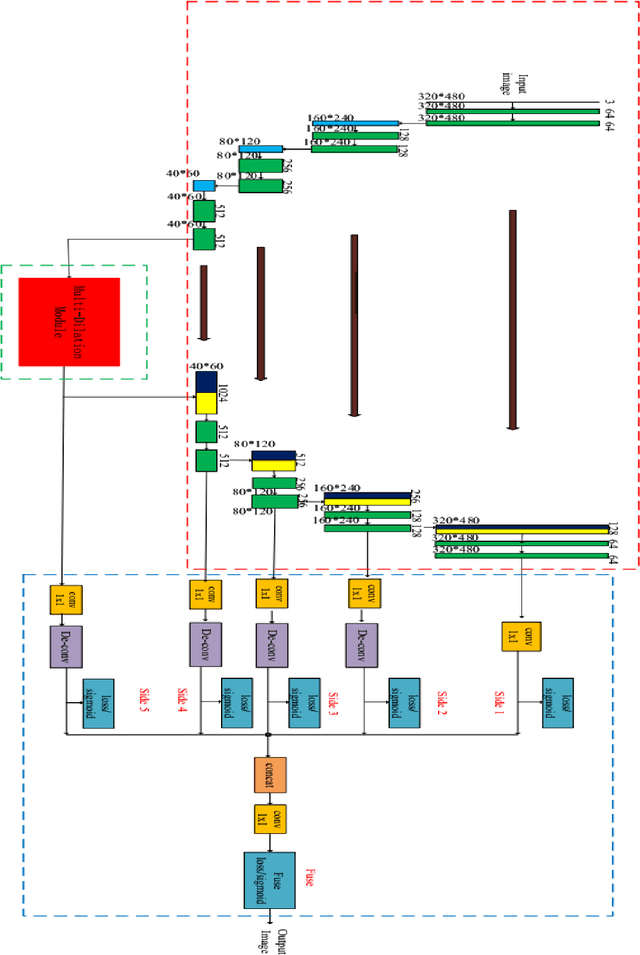
Abstract:Inspired by the development of deep learning in computer vision and object detection, the proposed algorithm considers an encoder-decoder architecture with hierarchical feature learning and dilated convolution, named U-Hierarchical Dilated Network (U-HDN), to perform crack detection in an end-to-end method. Crack characteristics with multiple context information are automatically able to learn and perform end-to-end crack detection. Then, a multi-dilation module embedded in an encoder-decoder architecture is proposed. The crack features of multiple context sizes can be integrated into the multi-dilation module by dilation convolution with different dilatation rates, which can obtain much more cracks information. Finally, the hierarchical feature learning module is designed to obtain a multi-scale features from the high to low-level convolutional layers, which are integrated to predict pixel-wise crack detection. Some experiments on public crack databases using 118 images were performed and the results were compared with those obtained with other methods on the same images. The results show that the proposed U-HDN method achieves high performance because it can extract and fuse different context sizes and different levels of feature maps than other algorithms.
ENAS U-Net: Evolutionary Neural Architecture Search for Retinal Vessel Segmentation
Jan 18, 2020
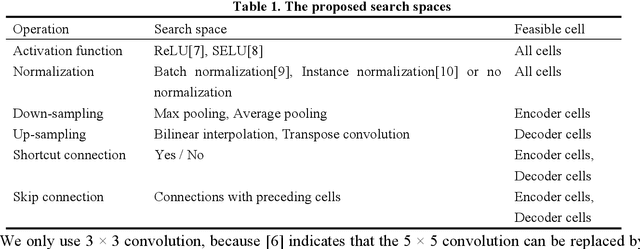
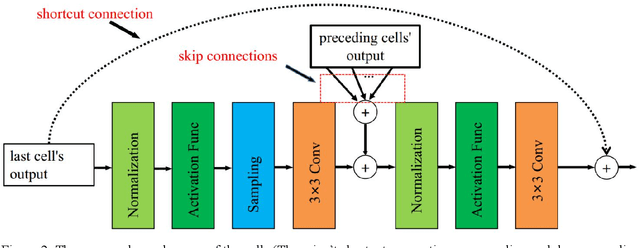

Abstract:The accurate retina vessel segmentation (RVS) is of great significance to assist doctors in the diagnosis of ophthalmology diseases and other systemic diseases, and manually designing a valid neural network architecture for retinal vessel segmentation requires high expertise and a large workload. In order to further improve the performance of vessel segmentation and reduce the workload of manually designing neural network. We propose a specific search space based on encoder-decoder framework and apply neural architecture search (NAS) to retinal vessel segmentation. The search space is a macro-architecture search that involves some operations and adjustments to the entire network topology. For the architecture optimization, we adopt the modified evolutionary strategy which can evolve with limited computing resource to evolve the architectures. During the evolution, we select the elite architectures for the next generation evolution based on their performances. After the evolution, the searched model is evaluated on three mainstream datasets, namely DRIVE, STARE and CHASE_DB1. The searched model achieves top performance on all three datasets with fewer parameters (about 2.3M). Moreover, the results of cross-training between above three datasets show that the searched model is with considerable scalability, which indicates that the searched model is with potential for clinical disease diagnosis.
 Add to Chrome
Add to Chrome Add to Firefox
Add to Firefox Add to Edge
Add to Edge